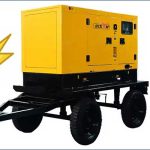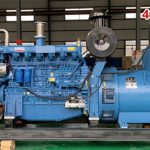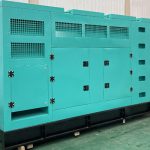The diesel generator exhaust pipe mainly plays a role in the process of removing exhaust gas and reducing noise. It is recommended to use black iron pipe as the material of diesel generator exhaust pipe and choose an elbow with a larger radius as much as possible.
Genset Exhaust Pipe Installation
In order to absorb thermal expansion, install a diesel generator set, and set displacement and vibration, the engine exhaust port should be connected with retractable stainless steel bellows of more than 24 inches;
Small genset exhausts that are fixed directly to the floor should also have bellows greater than 18 inches;
In order to reduce condensation corrosion, the exhaust pipe muffler should be installed as close as possible to the engine for rapid heating;
The muffler and exhaust pipe should be supported by a hanger. It is strictly forbidden to use the engine exhaust pipe for load bearing, otherwise, the engine exhaust pipe will be damaged and the life of the turbocharger will be reduced;
Under the premise of complying with the engine exhaust pipe back pressure limit, it is recommended that the nominal diameter of the entire exhaust system pipe be as consistent as possible with the engine exhaust port;
It is forbidden to use pipes with a diameter smaller than the exhaust port, because thick pipes are more susceptible to condensation corrosion, and will also expand the exhaust gas discharge to cause power loss;
Implement heat insulation for all mufflers and exhaust pipes to avoid accidental fire or false activation of automatic fire extinguishing equipment, and reduce condensation corrosion and heat radiation in the unit room;
When the temperature rises by 100°F at room temperature, the exhaust pipe will expand about 0.0076 inches per inch. It is recommended that stainless steel bellows must be used to absorb the thermal expansion of long straight pipes. The horizontal exhaust pipe should have a slope;
Diesel Generator Exhaust Pipe Installation Tips
Exhaust pipes and combustibles should be at least 9 inches apart;
The smaller the diameter change of the exhaust system, the smaller the friction loss;
The low end is away from the engine and goes to the outdoors or condensate collector;
Bellows are strictly prohibited to be used as elbows and to compensate for pipeline installation errors;
When it is necessary to pass through walls and ceilings, the exhaust pipe should be equipped with flame-retardant sleeves or heat-insulating cotton;










